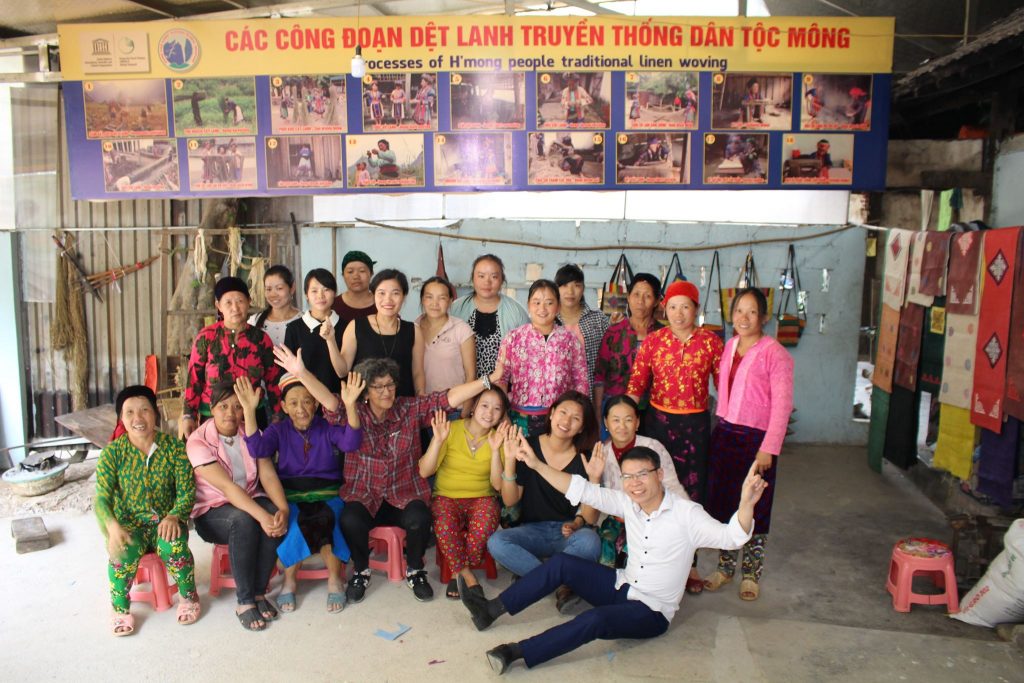H’mong Motif
H’Mong handmade linen
In north Vietnam, H’Mong women traditionally work in agriculture and handicraft. In the past, the H’Mong people frequently moved from place to place carrying maize and flax seeds with them. When a new place was found, H’Mong men built forges to make tools such as knives, hoes and plows, while women found soil to grow maize and flax. Maize helped feed the community and flax provided fiber to weave linen for clothing.
Linen making is a unique culture of the local H’Mong ethnic minority. All H’Mong women must make at least 2 linen products during their life: one dress for marriage, and one dress for funerals. They cultivate flax, dye the fibre with organic green and weave the linen. They might also paint the linen with indigo to create unique textile designs.
All H’Mong girls are taught how to make linen by their mothers and grandmothers. This culture is deeply embedded in daily life, as almost every woman carries a spool to spin threads while going to the market, farming or doing daily activities.
Flax is a natural raw material, making linen one of the most sustainable textiles known to man. In all steps of production, chemicals are avoided. Even when dying the fabric, women producers only use natural ingredients such as roots, leaves and flowers to develop beautiful colours. The linen products of H’Mong women are 100% handmade, environmental-friendly and sustainably produced.


Women producers
There are 23 women members of Can Ty linen cooperative which began operation in 2010. You can visit the Can Ty Linen Cooperative to buy beautiful handmade linen products. Usually the working hours at the cooperative depends on the season as linen handicraft has become a secondary source of income for most households. All women involved in the cooperative have children and work hard to cover their living costs
Collection

